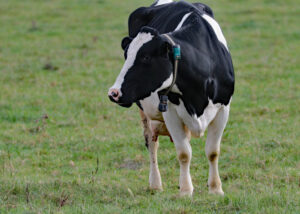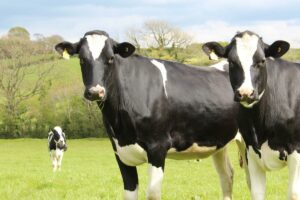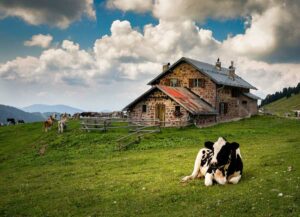Álvaro García
Heat stress in lactating dairy cows leads to physiological responses that affect their well-being and performance. The peculiarity of their digestive system leads to increased heat increment, which further compounds with external environmental warm temperatures.
To cope with this heat overload, cows rely on two main mechanisms. One internal, which is to reduce feed intake and thus heat production, the second external which is to look for cooler spots in the barn or the field. The heat overload affects several aspects of the animal’s physiology, ranging from reductions in productivity, reproductive losses, all the may to increased incidence of digestive upsets.
Dairy farmers in warmer climates tackle this problem with a few different approaches targeting both internal and external sources of heat. One frequent approach (external) is to cool-off cow’s through water sprinklers, forced air through fans or a combination of both. Another approach (internal) is to increase the nutrient density of the diet to account for reduced feed intake. Despite all these efforts there is still always a sensible reduction in intake, which results in a negative energy balance.
A negative energy balance causes hormonal changes such as a reduction in leptin and an increment in ghrelin
This disparity between energy intake and its requirements for production leads to hormonal changes responsible for further drops in intake. One such change is the reduction in leptin and an increase in ghrelin. Leptin synthesized in the adipose tissue has important bearing in eating behavior, energy expenditure, and body weight. It signals the hypothalamus of the adequacy of the energy status in the body, and the need to reduce intake.
Ghrelin on the other hand, is synthesized in abomasum and rumen, and with also signal functions in the brain. There are two forms of ghrelin (acylated ghrelin and des-acyl ghrelin) that binds to the growth hormone secretagogue receptor. Acyl ghrelin release signals energy insufficiency with its concentrations increasing during fasting before the daily meal and stopping once the animal starts eating.
It has been observed that acyl ghrelin concentrations are lower during summer heat stress. Des-acyl ghrelin is much more abundant than acylated ghrelin and its effects are still to be elucidated.
A recent study (Kleinjan-Elazary et al., 2020) assessed the effects of increasing the number of cooling sessions carried out in the holding area of the milking parlor from 5 to 8 times/day during heat stress on acyl ghrelin and leptin concentrations.
Holstein cows were divided in two groups as follows:
- 5 cooling sessions per day (5-CS)
- 8 cooling sessions per day (8-CS)
Advantages of using abatement systems
Diets were TMR with 1.78 Mcal of energy (NEL), 16.5% protein, and 29.8% fiber (NDF). Both groups of cows were cooled before each milking. Between milking sessions 5-CS cows were brought twice and 8-CS cows were brought 5 times for the additional cooling sessions. Each cooling session lasted 45 min, comprised of repeated cycles of 60 seconds of shower and 4 minutes of forced ventilation only. Cows were milked 3 time per day.
Cows on the 8 CS group produced more energy-corrected-milk (41.3 vs. 40.3 kg/day) and had higher concentrations of acyl-ghrelin and leptin in blood than cows in the 5-CS group. However, the total ghrelin in blood was lower in 8-CS cows.
Moreover, cows in 8-CS ruminated (528 vs. 421 min/day) and laid down more (595 vs. 548 min/day) and were more active when not laying down (149 vs. 127 steps/h). There were however no differences between cooling groups in dry matter intake and milk composition.
This study shows that adding three extra cooling sessions during the day helped mitigate the effects of heat stress showed by differences on ghrelin and leptin concentrations. Additional cooling sessions improved cow’s well-being and production.
Reference
Kleinjan-Elazary, A., Ben-Meir, Y., Gacitua, H., Levit, H., Fridman, A., Shinder, D., … & Gershon, E. (2020). Cooling management effects on dry matter intake, metabolic hormones levels and welfare parameters in dairy cows during heat stress. Journal of Dairy Research, 87(1), 64-69.
© 2020 Dairy Knowledge Center. All Rights Reserved.











